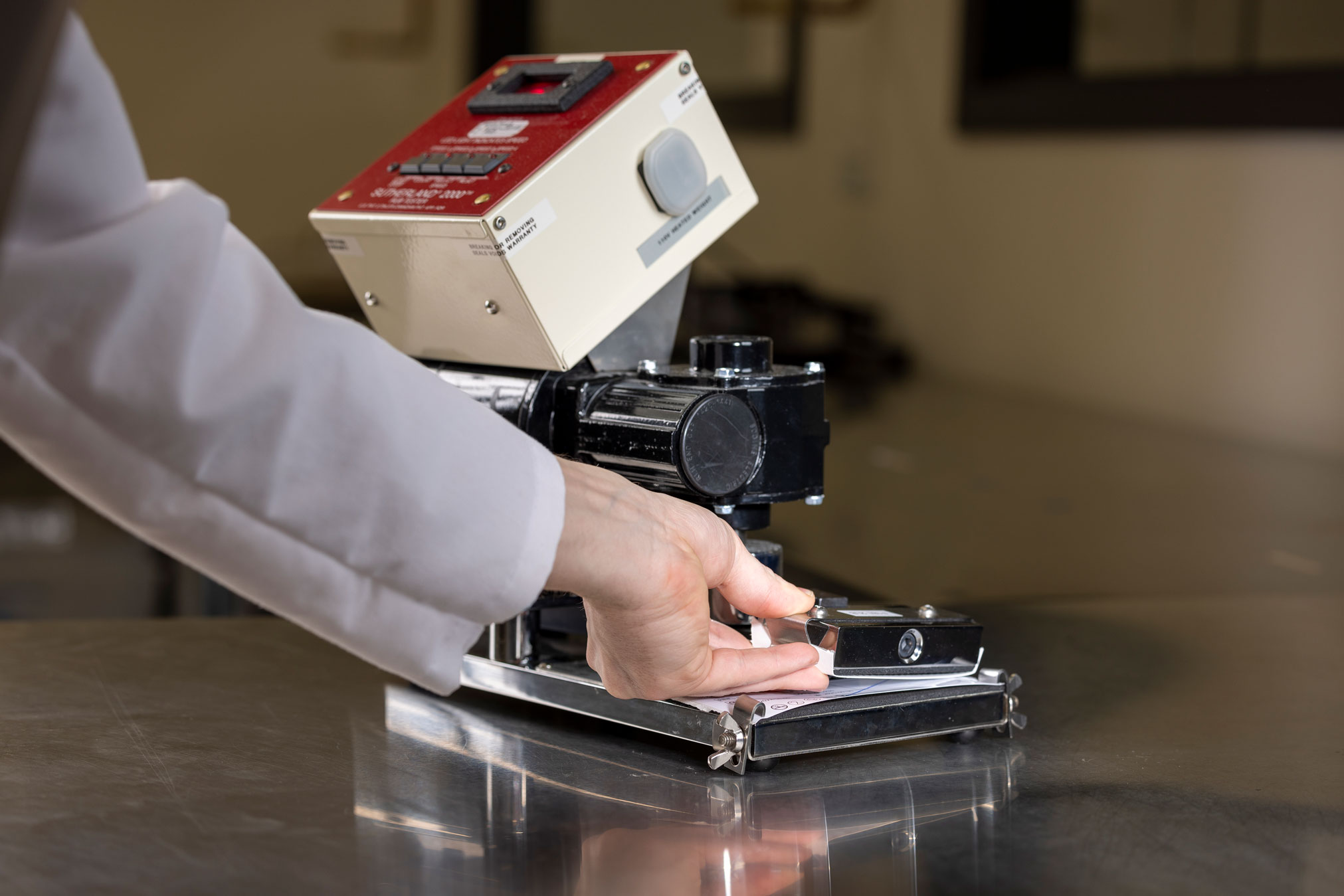
Sutherland Rub Test
The ASTM D5264 Sutherland Rub Test is typically used to evaluate the ability of printed labels to resist scuffing and smearing under controlled conditions. A test label is rubbed repeatedly against another surface (such as another label, paperboard, or corrugated) under a constant pressure. After so many cycles, the test label is visually examined for scuffing or smearing that impairs legibility. Similarly, any printed barcodes can be scanned. The Sutherland Rub test is typically used as an R&D tool to evaluate the relative performance of one material when compared to another.

Industry Application
This testing procedure is frequently used as a label comparison R&D tool. It is performed by rubbing a printed label against a substrate to evaluate scuffing resistance. The Sutherland Rub test can aid in the decision regarding materials of selection for labels and inks, as well as to evaluate the performance of certain printing technologies against others. The Sutherland Rub test can also be used to monitor trends in material or print quality over time.
Frequently asked questions
What does Sutherland Rub Test do?
Sutherland Rub Testing per ASTM D5264 tests to gauge the abrasions that are caused during shipping, handling, storage, and end use. The amount of abrasion damage to a printed substrate is dependent on shipping conditions, possibly temperature and humidity, time, and many other variables.
Is Sutherland Rub Test a required test method for medical device packaging validation?
It is not. Rather, this practice provides a way of comparing abrasion resistance of printed materials under laboratory conditions. Sutherland Rub testing can also be used to evaluate the relative abrasion resistance of printed inks, coatings, laminates, and substrates.